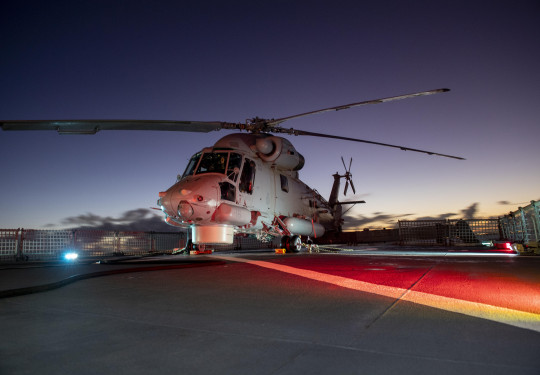Long journey for electronic warfare rig
In 2015, Royal New Zealand Air Force's Warrant Officer Glen Moratti identified an opportunity for capability enhancement using a test rig to verify our SH-2G(I) mission data libraries without relying on the aircraft to do so.
12 July, 2022
Warrant Officer Glen Moratti, former Section Commander Electronic Warfare Support Section at No. 230 Mission Support Squadron, identified an opportunity for capability enhancement using a test rig to verify our SH-2G(I) mission data libraries without relying on the aircraft to do so.
And so the project began! Little did we know that this lightbulb moment would result in seven years of hard slog and collaboration between the New Zealand Defence Force and Beca. Initially, it was envisioned that we could acquire the test rig that the Australian Defence Force used to support their Seahawk, which used the same hardware, but unfortunately due to intellectual property issues we were not able to.
In late 2015, a proposal for a full system design was turned down, largely due to cost. A revised proposal for a cut down design was approved in October 2018 and the project was officially stood up. Our last administrative hurdle was approval for Beca to access the hardware, which was achieved through the US State Department updating the Manufacturing License Agreement.
Using aircraft Line Replaceable Units (LRUs), No. 230 Squadron subject matter experts designed the test rig so that it would ensure the integrity of the receiver and processing chain and be a true representation of the aircraft installation.
All that was needed then, was a front end that read and understood the data words and could provide a suitable graphical user interface. This would then provide mission assurance to the Electronic Warfare data libraries.
Beca analysed the aircraft front end architecture to assess what could be emulated in the test rig, including the electronic support measures, and established what was actually feasible. From here, it was as simple as building it!
Throughout the project, we found innovative solutions to overcome obsolescence and financial challenges. Avionics Squadron Auckland produced all of the cabling to military specifications and even produced a socket using 3D printing. The chassis was created and tested using commercial off-the-shelf software and hardware to reduce costs.
“The SH-2G(I) test rig is now used to functionally test mission data libraries, creating mission assurance allowing the Defence Force to assure safe operations within contested tactical maritime environments.”
The software was created with an agile, loop-based, iterative design. The last stage, the acceptance testing agreed by No. 230 Squadron and Beca, was achieved through building a mission data library and testing this data against very complex models in order to test the full functionality of the system. In April 2022, the test rig passed its acceptance test.
Additionally, it can be used for off aircraft fault confirmation, which also eliminates any variations of the aircraft configuration between the frames, enabling us to prove the faults in LRUs before sending them away for repair.
The test rig architecture was designed to allow the rig to be updated and advanced to further enhance the capability as the NZDF adapts to a continually changing operating environment.
No project takes seven years without the hindrance of many challenges. Our project team was split across Auckland and the Manawatū. Covid-19 forced us online and we turned to remote collaboration to achieve completion of the task.
Collaboration was the key to our success, through relationships and shared values.
In addition to the stakeholders already mentioned, No. 6 Squadron Avionics delivered information on buttons and sequencing, the Directorate of Project Engineering and Certification provided information on the aircraft design, No. 230 Squadron provided subject matter expertise on mission data libraries and the verification process, and the Australian Defence Force provided introduction into service documents for the aircraft.
“The project leveraged Beca’s longstanding relationship in providing software engineering solutions for the P-3K2 Orion and the SH-2G(I) Seasprite. However, the real success was due to the close, established working relationships between the Beca project team, software engineers, and No. 230 Squadron personnel,” Beca project lead Sam Knight said.
All members of the Beca project team, with the exception of Jeon Chow, are previous serving Air Force members, all from the Electronic Warfare and Avionics trades.
Collaboration between Beca and the NZDF is optimised through shared values, which were very much on display for the duration of this project, and gave us a solid foundation for success. Beca’s tenacity, partnership, enjoyment and care has obvious alignment with our values of courage, commitment, comradeship and integrity. This relationship will continue to flourish and be of significant value to the Defence Force.
